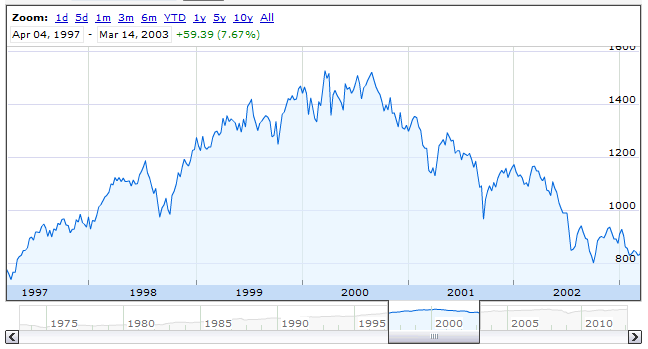As all fans of the Discovery Channel's Mythbusters know, it takes three things to make a fire: fuel, oxidizer and a spark. If you combine these three things in the right proportions, you too can make a fire.
Economic bubbles work much the same way.
Let's start by considering the circumstances that launched the first U.S. housing bubble back in 2001. Here, the leading role of "fuel" will be played by the Federal Reserve's policy regarding interest rates. The role of "oxidizer" will be represented by a number of factors that are always present in the economic environment, much like oxygen is always present throughout the Earth's atmosphere. These factors include things like mortgage loan underwriting policies, state and local zoning policies, etc.
But the key role of the spark belongs to another bubble, whose own origins we've already addressed: the Dot-Com Stock Market Bubble.
Let's set the stage. The Dot-Com Bubble, which began in April 1997, reached its peak in 2000. Here, stock prices had inflated dramatically until the S&P 500 peaked at a value of 1,527.46 on 24 March 2000, after which the stock market bubble entered into its deflation phase as stock prices began moving sideways for the next five months.
That plateau lasted through August 2000, which coincidentally marks the peak of the S&P 500 when measured as the average of the index' daily closing values during a calendar month, with an average value of 1,485.46. By comparison, the average value of the S&P 500 back in March 2000 when it marked its peak daily closing value was 1,442.21.
Source: http://townhall.com/columnists/politicalcalculations/2013/03/30/bubbles-and-fire-n1553269
pat burrell hilary rosen grilled cheese allen west north korea missile don t trust the b in apartment 23 world financial center

No comments:
Post a Comment
Note: Only a member of this blog may post a comment.